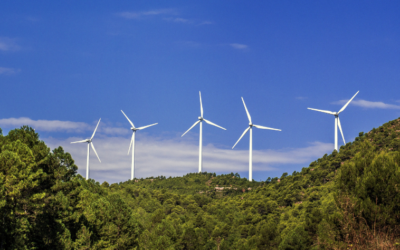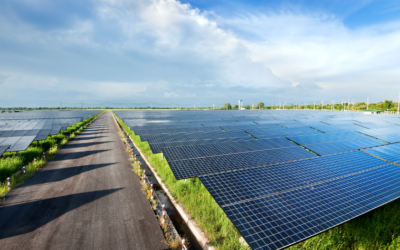Harvesting Energy on the Farm
On-Farm Renewable Energy Systems:
Solar Panels: Farmers are increasingly installing solar panels on their properties to harness sunlight and generate clean electricity. This not only powers on-farm operations but also contributes to the local energy grid.
Wind Turbines: Wind turbines on agricultural land capitalize on open spaces to generate wind energy. Farmers can benefit by selling excess electricity back to the grid.
Biomass and Bioenergy:
Agricultural Residues: Crop residues, such as stalks and husks, are utilized as biomass for bioenergy production. This sustainable practice reduces waste and provides an additional revenue stream for farmers.
Anaerobic Digesters: Livestock waste, like manure, can be processed in anaerobic digesters, producing biogas for electricity and heat. This not only generates energy but also helps manage farm waste.
Agricultural Land as Energy Producers
Solar Farms on Agricultural Land:
Land Dual-Use: Solar farms on agricultural land exemplify dual land use, where the same space serves for both energy production and agricultural activities. This allows farmers to maintain productivity while contributing to renewable energy generation.
Community Solar Initiatives: Agricultural communities often participate in community solar initiatives, collectively investing in and benefiting from solar projects.
Wind Farms and Crop Integration:
Wind Turbines Among Crops: Integrating wind turbines within agricultural fields optimizes land use. Farmers can continue cultivating crops around the turbines, ensuring minimal disruption to farming operations.
Economic and Environmental Impact
Economic Benefits:
Diversification of Income: Farmers benefit from diversifying their income streams through renewable energy generation. Selling excess energy to the grid provides an additional source of revenue.
Reduced Energy Costs: On-farm renewable energy systems reduce farmers’ dependence on external energy sources, lowering operational costs in the long run.
Environmental Stewardship:
Carbon Footprint Reduction: The integration of renewable energy on agricultural land contributes to reducing the carbon footprint of both farming and energy sectors.
Conservation Practices: Farmers engaged in renewable energy often align their practices with environmental conservation, promoting sustainable land use.
Challenges and Future Outlook
Land Use Planning:
Balancing Needs: Challenges include balancing the need for agricultural production with the demands of renewable energy installations. Strategic land use planning is essential to maximize benefits.
Technology Advancements:
Innovations: Ongoing technological advancements, such as improved energy storage solutions and more efficient renewable energy systems, will further enhance the feasibility and sustainability of these practices.
Conclusion
Agricultural land is emerging as a crucial player in the renewable energy transition. From on-farm systems to large-scale solar and wind farms, the collaboration between agriculture and renewable energy demonstrates a harmonious path toward a more sustainable and energy-resilient future.




